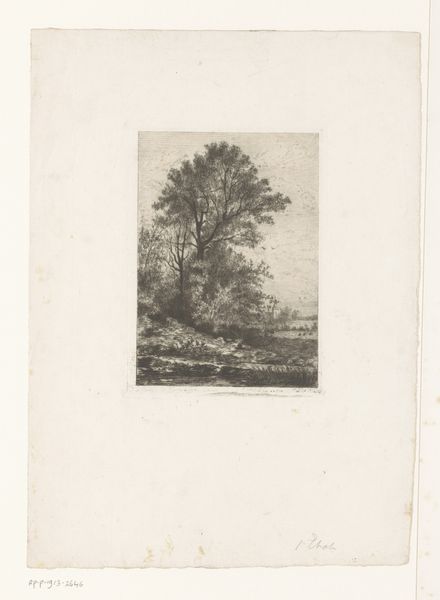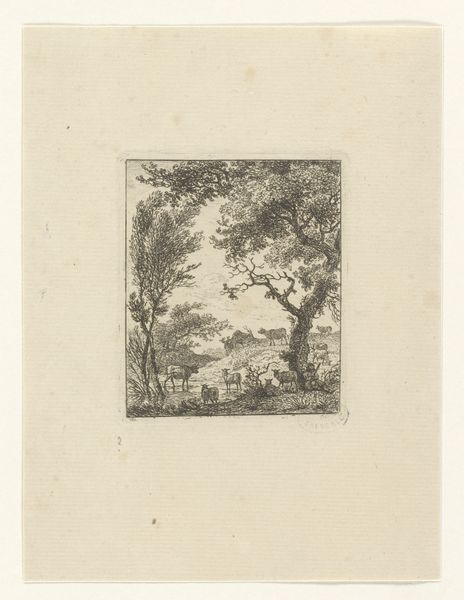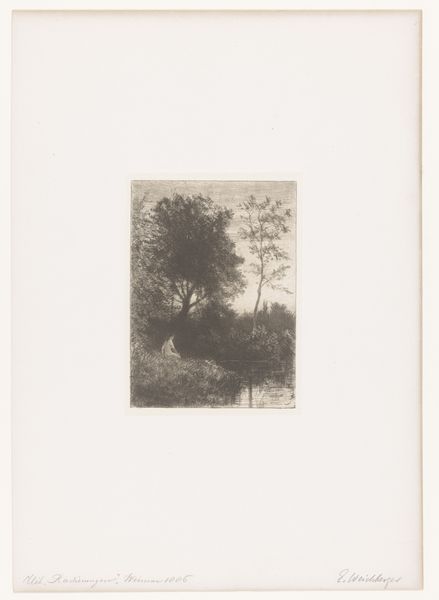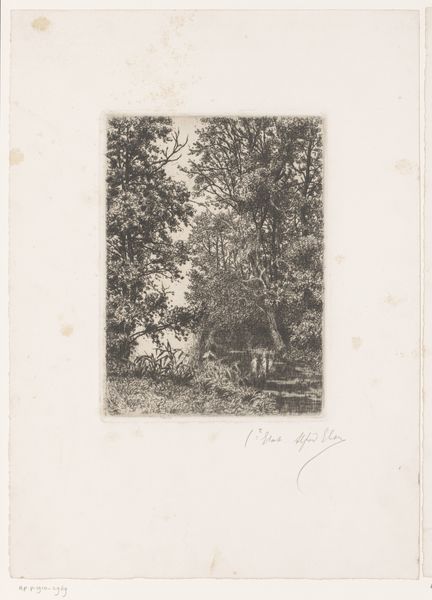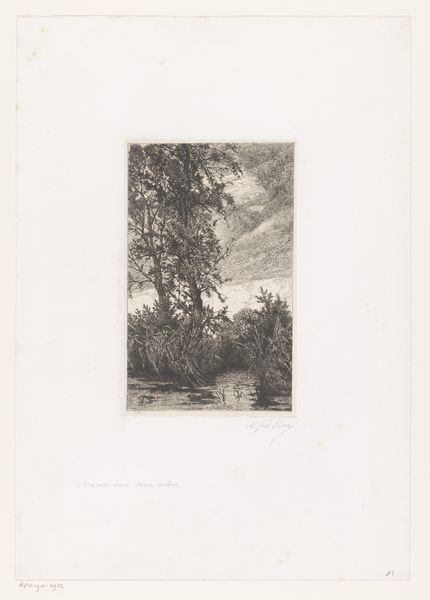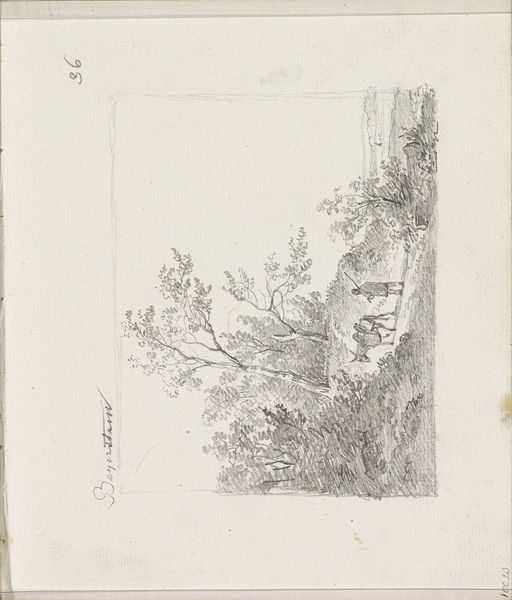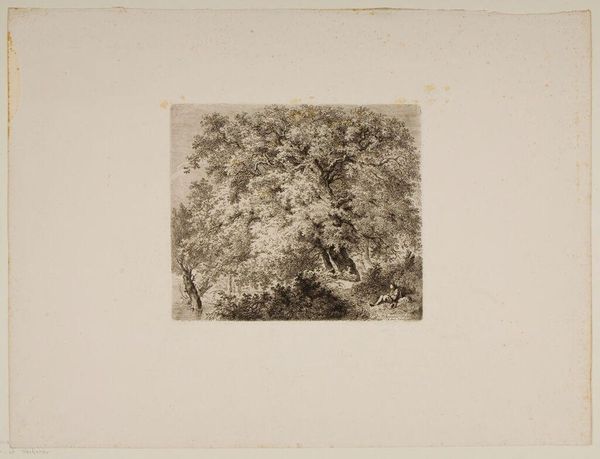
drawing, print, etching
#
tree
#
drawing
# print
#
etching
#
landscape
#
romanticism
Dimensions: height 54 mm, width 40 mm, height 101 mm, width 74 mm
Copyright: Rijks Museum: Open Domain
Editor: This is "Landscape with Crooked Tree," an etching by Rodolphe Bresdin from 1849. It’s incredibly detailed, almost claustrophobic in its density. The twisted tree seems to dominate everything. What do you see in this piece? Curator: I see a potent symbol of resilience amidst adversity. Consider the social and political landscape of 1849; revolutions were erupting across Europe. Bresdin's gnarled tree, etched with painstaking detail, stands as a visual metaphor for the enduring spirit of the common person, clinging to life despite the storms of societal upheaval. Do you see the subtle figures nestled within the undergrowth? Editor: Yes, barely. They seem dwarfed by the landscape, almost hidden. Curator: Precisely! And aren't those figures almost ghostlike, seemingly displaced or forgotten? They make me consider who has the privilege to exist safely and visibly within a space, and who is forced to the margins? Bresdin uses the romantic landscape not as an escape, but as a mirror reflecting societal inequalities. The wildness represents liberation, but also the dangers inherent for those living outside societal norms. What does that density of line work communicate to you? Editor: I guess I hadn’t really thought of it that way, but it does make it feel less idyllic and more like a commentary. All that detail almost feels like… oppression. It's like the figures are struggling to break free from the undergrowth. Curator: Exactly! By contrasting these nearly invisible figures with the overbearing tree, Bresdin offers a nuanced perspective on the romantic ideal of nature. He prompts us to think about freedom, and who has it. It also makes you wonder what a queer reading of the contorted nature could reveal. It’s quite powerful, don’t you think? Editor: I definitely see the artwork differently now! Thank you for pointing out the historical context and the layers of meaning behind the visual density. Curator: And thank you for asking! Engaging with art through an intersectional lens allows us to understand it and our world a bit more deeply.
Comments
No comments
Be the first to comment and join the conversation on the ultimate creative platform.



